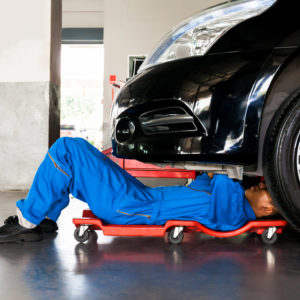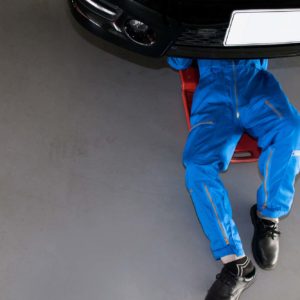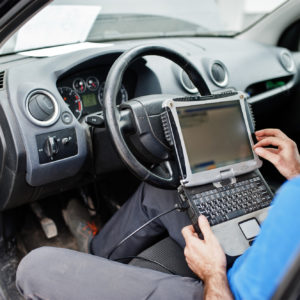Hydroplaning refers to instances where your vehicle skids across a wet surface uncontrollably. It occurs when the water creates a thin film between the tire and the road, causing tires to lose traction.
Often devastating and fatal, hydroplaning occurs more frequently when driving fast, but at what speed is the risk highest?
At What Speed Does A Vehicle Hydroplane?
Vehicles typically hydroplane at approximately 35 miles per hour, so it’s best to limit your speed when driving, especially on wet terrain. Experts recommend driving 5-10 miles below the road’s speed limit to avoid getting into an accident.

How to Avoid Hydroplaning
While it helps to know the speed at which hydroplaning usually occurs, it pays to know how to avoid it altogether. Here are some tips to prevent your vehicle from hydroplaning.
Disable Cruise Control On Wet Roads
Although cruise control has its uses, you shouldn’t activate it when driving on wet roads. It keeps the vehicle moving at a specific speed, which means you can’t decelerate while it’s active. This could be risky, especially when driving on roads slick with ice or water.
Don’t Use Worn Tires
The more use a tire gets, the more its tread wears out and the higher the risk of hydroplaning. Tire tread gives your vehicle the traction it needs to move across surfaces without slipping and sliding.
Make sure to replace any worn-out tires immediately. Most importantly, replace your tires in full sets of four to make sure they all have the same lifespan.
Drive Slowly On Wet Roads
Because hydroplaning happens frequently at speeds higher than 35 miles per hour, it’s strongly recommended to avoid going over that speed.
Similarly, limiting your driving speed and going slow when the road is wet will help you pay attention to your surroundings. It’ll be easier to spot and avoid puddles or wet patches on the road or puddles.
Inflate Your Tires
Keep your tires well-inflated at all times to ensure optimal traction. Bear in mind that this doesn’t mean you should inflate it too much. Overinflating a tire can make your vehicle more likely to hydroplane.
If the tire inflation pressure is too low, your vehicle also becomes more likely to hydroplane, so keep an eye on your tire pressure.
Use Wet Grip Tires
Last but not least, one of the best ways to stop your vehicle from hydroplaning is to install wet grip tires. These tires are helpful in rain-prone areas because they maximize water evacuation, making your vehicle less likely to hydroplane.
Although your vehicle can still lose traction on wet roads, wet grip tires are specially created to combat hydroplaning. This gives your vehicle a lot more stability, handling, and braking ability on wet surfaces.

What to Do When Your Vehicle Hydroplanes
If your vehicle hydroplanes, don’t panic. Follow these steps to get out of the situation safely.
Avoid Accelerating or Hitting the Brakes
First, take your foot off the accelerator and let your tires slow down gradually. Don’t hit the brakes while hydroplaning because doing so might change your trajectory.
If you don’t accelerate or hit the brakes when hydroplaning, you can at least keep it on a straight and predictable trajectory.
Steer Your Tires to Match the Direction You’re Hydroplaning
Use the steering wheel to align your tires with the direction in which you’re hydroplaning. This will help your vehicle maintain a straight and predictable direction, allowing you to avoid danger or brace yourself for impact.
Going in a straight and steady line can also help your vehicle slow down because you’ll have more room to decelerate. Just make sure to turn the steering wheel slowly to prevent your vehicle from going out of control.
Ride it Out and Wait
After aligning the tires to your vehicle’s trajectory, all that’s left for you to do is wait it out. In time, your vehicle will decelerate. Traction will increase and you’ll be able to stop or regain control eventually.
What Causes Hydroplaning?
Hydroplaning is dangerous because of how easily it happens. It’s commonly caused by water on the road, under-inflated tires, worn tire treads, smooth and worn-out roads, and driving too quickly. If you want to avoid hydroplaning, it’s important to watch out for potential signs. Keep your eyes peeled for rain, roads that feel too smooth, and worn tired treads.
Driving Too Quickly
Driving at high speeds down a wet road puts you at risk of hydroplaning. The faster your vehicle goes, the less effective it becomes at dispersing water. The tires will lose traction as water slips underneath, making you lose control of your vehicle.
Smooth Roads
Smooth and worn-out roads are extra dangerous in rainy weather. It’s bad enough that water makes it possible for a vehicle to hydroplane, but if the roads are smooth, the risk of skidding and losing control increases significantly. This is because worn-out roads have far less traction than usual.
Underinflated Tires
Tires that lack air pressure distort and change shape, reducing how much contact they make with the road. The more deflated and deformed the tires, the more likely you are to hydroplane.
Water on the Road
Hydroplaning is only possible if there’s water on the road. Because of this, the risk of hydroplaning increases significantly in rainy weather or when there’s a spill or a leak from a water tank or fire hydrant. The deeper the depth of the water on the road, the easier it is for a vehicle to hydroplane.
Worn Tire Treads
Tires with worn treads have less traction, making their respective vehicles significantly more likely to hydroplane when driving over wet roads.
What Should You Do After Your Vehicle Hydroplanes?
As soon as you’ve regained control of your vehicle, pull over. Give yourself some time to calm down and process what happened so that you can drive more confidently afterward.
However, if you hit something or someone while your vehicle was hydroplaning, contact your insurance company and file an incident report with the police. If you bump into another vehicle — or worse, a pedestrian — get their contact information and contact the police.
Where to Get a New Tire Pressure Monitoring System for Your Vehicle
Driving around with the wrong tire pressure is one of the reasons why your vehicle could hydroplane. To prevent this from happening, it’s crucial to have a working tire pressure monitoring system. However, replacing this part can be quite troublesome if you don’t know where to look.
Fortunately, CarParts.com made online shopping extremely easy for people looking to get high-quality replacement parts for their daily drivers.
By entering your vehicle’s year, make, and model into our vehicle selector, you’ll be able to browse a parts catalog containing all compatible replacement parts, accessories, and upgrades for your car. You can also use the search filters to narrow down the results according to your preferred brand, price range, quantity, and more.
Here at CarParts.com, it’s impossible to go over budget. All our products come with a lifetime replacement and low-price guarantee, so there’s no need to worry about breaking the bank for your repairs.
Find everything you need in a matter of minutes, and check out securely with a few clicks. Thanks to our strategically located warehouses across the US, you can get your order delivered straight to your doorstep in as fast as two business days.
Don’t miss out on the best deals on the market, and shop for a high-quality tire pressure monitoring system today!
Any information provided on this Website is for informational purposes only and is not intended to replace consultation with a professional mechanic. The accuracy and timeliness of the information may change from the time of publication.















